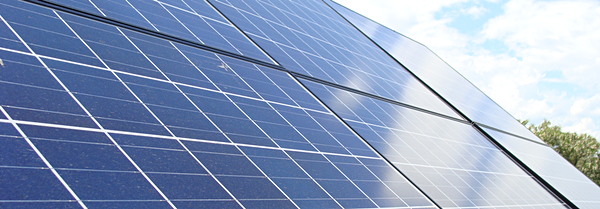- By Town of Lansing Director of Planning C.J. Randall
- Around Town
 Print
Print 
Following changes in state energy policy is a part of the work we do here at the Town, and for good reason: there are currently three utility-scale (read: big) solar energy projects in the power grid queue for northeast Tompkins County, according to the New York Independent System Operator (ISO), who manages the state's electricity grid. Altogether these three solar energy projects are slated to cover over 2,500 acres in the Town of Lansing alone.
If you own significant acreage near or adjacent to the NYSEG utility corridor that bisects the Town, you have likely already been contacted by representatives from CS Energy, NextEra, and sPower, among others, as these developers already have projects in the power grid queue and are in the process of 'assembling' various parcels of land to piece together large solar energy system projects.
What is happening with the solar projects?
Solar energy systems convert sunlight into electrical current, which can power electric loads, be fed to the electric grid, and be stored in batteries. New York State passed the Climate Leadership and Community Protection Act (CLCPA) last year, which sets ambitious targets, including that 70 percent of the state's electricity come from renewable sources by 2030 and that 6,000 MW of solar energy must be installed to serve New Yorkers by 2025. As a follow-up, along with the 2020-2021 state budget, NYS passed the Accelerated Renewable and Community Benefit Growth Act, intended to help expedite the construction of large-scale solar and wind energy projects throughout the state. Though the Lansing Town Board passed a Resolution opposing this state action, the Act was adopted and with that the new Office of Renewable Energy Siting (ORES, also known as the Siting Office) was created.
Why are solar developers looking at the Town of Lansing for these projects?
As you may know, the former Cayuga Operating Company Milliken Station coal-fired power plant is now offline, which means there is capacity in the existing electric transmission lines – built in the 1950's – that bisect the Town. The state passed the Climate Leadership and Community Protection Act (CLCPA) in 2019, which sets some of the most ambitious renewable energy and climate targets yet. Flat land without many structures (such as active farmland) with proximity to bulk transmission lines is the preferred location for many solar energy facilities.
What are farm groups and environmental organizations saying about siting on Prime farmland and wildlife habitats?
The Town of Lansing, home to a substantial percentage of Prime Soils and Soils of Statewide Significance, has a rich agricultural heritage. Research is just beginning at Cornell Engineering on "agrivoltaics' – the confluence of agriculture and solar energy – to help determine how utility-scale solar impacts microclimates and soils.
American Farmland Trust
Sierra Club Talking Points and FAQ
Where can I find the proposed Office of Renewable Energy Siting (ORES, Siting Office) Regulations?
The regulations and comment form are located online.
Doesn't the Town have solar regulations?
Yes, the Town of Lansing Solar & Wind Local Law (Local Law 3 of 2020) was adopted in July after two years of drafting and review by the Agricultural Committee, Conservation Advisory Council, Planning Board, and Town staff including Planning & Code Enforcement, Fire, and Highway Departments. However, it is expected that the Local Law No. 3 of 2020 will largely be preempted by the new Siting Office regulations. Though the Siting Office is required to consider any applicable local law when deciding on an application from a renewable energy developer, the Siting Office will be making a final determination on solar energy systems larger than 25 MW (1 MW of solar energy covers approximately six acres).
What about environmental review (State Environmental Quality Review Act)?
It is anticipated that the Siting Office will conduct its own environmental review based on the standards articulated in the draft Regulations. As currently written, the ORES regulations preempt the Town's Local Law including impact issues such as signs, traffic, noise, light, safety, water, the environment, construction, and nearly every standard listed in the Town's zoning and local laws, as well as SEQRA standards, including findings requirements.
What is the state offering as an incentive to municipalities?
Under the broad heading of 'Host Community Benefits,' a menu of options is currently being considered by the state's Department of Public Service and Siting Office, including a discount or credit on residential electric bills; a Host Community Benefit, such as a per MW payment directly to the Town from the solar developer; a PILOT (payment-in-lieu-of-taxes) agreement paid by the developer that is split between the County, School District, and Town.
What can I do to get involved or to find out more?
- Attend an online Public Hearing about the draft Regulations on November 24th or November 30th; register to participate.
- Submit your comments to New York State at by December 7, 2020.
- Call or email the Town of Lansing Planning & Code Enforcement Department at 607-533-7054 or This email address is being protected from spambots. You need JavaScript enabled to view it. and we will do our best to answer your questions about your property or projects we are aware of.
v16i45
